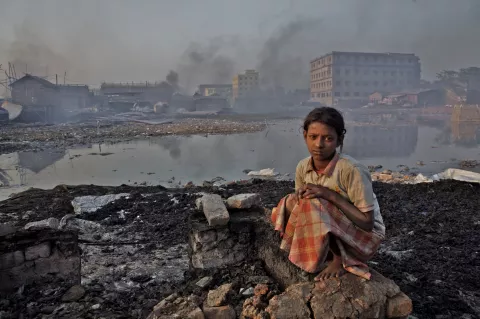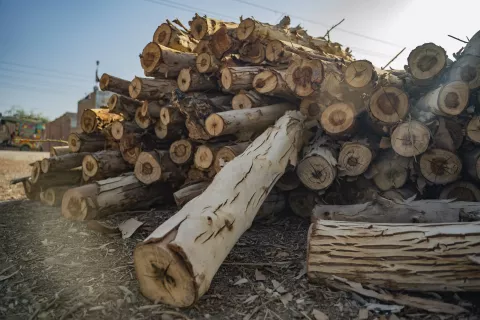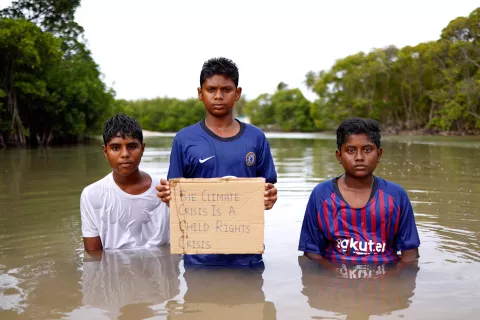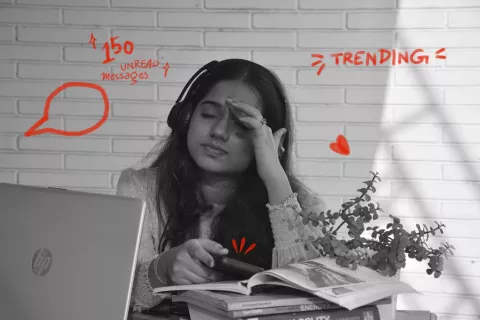Being an activist is not a choice for me. It’s a responsibility. I can't choose not to be vocal when people are suffering.
I’m on a journey to change the status quo. A status quo where the most vulnerable in the world are paying the heaviest price for climate catastrophes.
Growing up in Bangladesh, I’ve always wondered how to resolve the problems around us. In 2018, I started volunteering, teaching 15 children living in a slum in Dhaka. From speaking to these children and their parents, I learned why they migrated to the city.
One girl told me that a flood destroyed her home. Her family was forced to move to a cyclone shelter before relocating to Dhaka.
Another family had moved because the water in their area had become too salty to grow crops or to drink. This was due to the sea level rising and the salt water mixing with freshwater reservoirs. People could no longer grow food to eat or find water to drink.
These stories overwhelmingly had one thing in common. These children had to leave their homes, land and hope because of weather events intensified by climate change.
According to the Children’s Climate Risk Index, Bangladesh is one of the countries most vulnerable to the impacts of climate change in the world — despite being one of the lowest emitters of greenhouse gas per capita.
One in three children in Bangladesh – nearly 20 million children – are already affected by climate change.
I realised that accountability and actions of governments, decision makers, communities and society at large are more important than anything to help protect children and their futures.
So I started to engage in climate activism. In 2019 I joined the Fridays for Future Bangladesh chapter and began to learn more about what causes climate change. While working with Fridays for Future, I connected with UNICEF to write the Foreword for UNICEF’s Children’s Climate Risk Index report and in August 2022, I was appointed UNICEF Bangladesh’s Youth Advocate, to work on climate change and child rights.
Since then my activism has taken me to climate conferences across the country, region and world. I’ve had the chance to advocate for the climate at some of the biggest tables, including COP26 and COP27, the biggest climate conference in the world.
Meeting like-minded young people from across the world introduced me to new solutions to protect our world against climate change — and has given me hope.
In South Asia, the number of green entrepreneurs has recently increased, driven by young people themselves who are taking change into their own hands. They want to solve the climate crisis while addressing the economic crisis we might face. And there are endless examples.
In Bangladesh alone I’ve met young people promoting renewable energy solutions to reduce fossil fuel burning, more local consumption, plastic reduction and innovation in clothes and food systems that reduce emissions caused by production and shipping.
Their shared goal is to boost a sustainable South Asian economy by minimising greenhouse gas emissions.
In Shatkhira, 23-year-old SM Jannatul Naeem is making and selling vermicompost — a nutrient-rich fertiliser produced using various species of worms from vegetable or food waste. Food waste produces methane, one of the greenhouse gases causing global warming and sea level rise.
Jannatul’s vermicompost not only helps reduce emissions from food waste and the fertiliser industry, it also provides work for people from the village, helping to uplift them through the circular economy!

In Barishal, a team of youth called Supareca are making biodegradable plates from Areca nut leaves to replace disposable plastic plates — an inspiring example of using a nature-based solution to reduce emissions from plastic production. While youth-led platforms like watchtech are using online platforms to upcycle products like paper pens and money wallets from used clothes.
In Cox’s Bazar, UNICEF and their partners are supporting young people in the refugee camps to learn how to fix and maintain solar panels. With these green skills, young people are making sure the solar-powered learning centres, shelters and streetlights in the refugee camps are always bright and powered!
And students I met at Dhaka University are currently working on using saline water to make electricity! It’s hugely exciting research — but it’s still in progress and needs more resources and support.
Young people are the present and future scientists, architects, engineers, farmers, entrepreneurs, and negotiators in climate spaces. These young entrepreneurs are the change we need for a sustainable economy — and they need investment, training, and support now.
This support is especially crucial in South Asia to make sure that the transition to a greener world is a fair one.
Our region has large human resources and many industries that emit carbon, like garments and technology. As we shift to greener models, we need to make sure that people who lose their jobs have a chance to find jobs in the new green economy.
We want to create new jobs while in the transition process.
This is especially relevant to young people, who already face vast job market instability. It’s not fair for young people to take on additional burden for historical climate emitters. They need new jobs.
And the world can also benefit hugely from the energy, ideas, skills and perspectives of young people.
South Asia is home to 350 million youth — the largest population of youth on the planet. To untap their potential in the green transformation they need to be included and supported in a number of ways.
Firstly, green jobs need to be more accessible to youth. Companies and industries need to include young workers in their process of transition toward sustainability and governments should offer micro-credits to young people working in green business.
Research facilities need more funding to create solution-based green jobs and proven climate solutions should get more technical support from the government while false solutions should be stopped without more tangible research.
And we need to educate children and young people now about climate change, solutions and green jobs.
To my fellow youth colleagues and friends, you give me hope and power to continue. I urge you to look for innovative ways to work on circular economies and call out polluters.
A more sustainable future economically, socially, and environmentally is possible. Don’t give up hope. We can do this.
To decision makers in South Asia, the climate crisis can’t be solved in silos without addressing economic, social, and energy justice too.
There are solutions. The answer is staring us in the face. Don’t lose the opportunities from our huge demographic dividend. By investing in young people now, everybody wins.
As the extreme weather events of the last year have shown, action has never been more urgent. Devastating floods in Bangladesh and Pakistan have swept away homes and loved ones. July was the world’s hottest month on record. As the U.N. Secretary General António Guterres put it, ‘the era of global boiling has arrived.’
Our world is hurting. Children will suffer most. We cannot wait.









